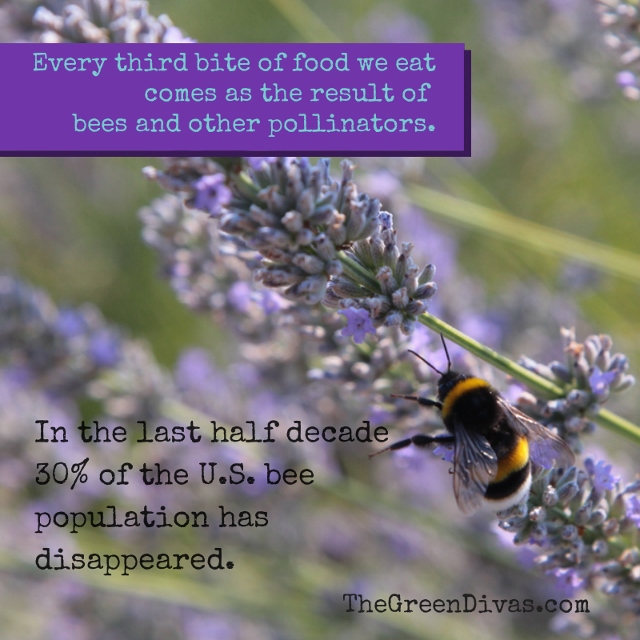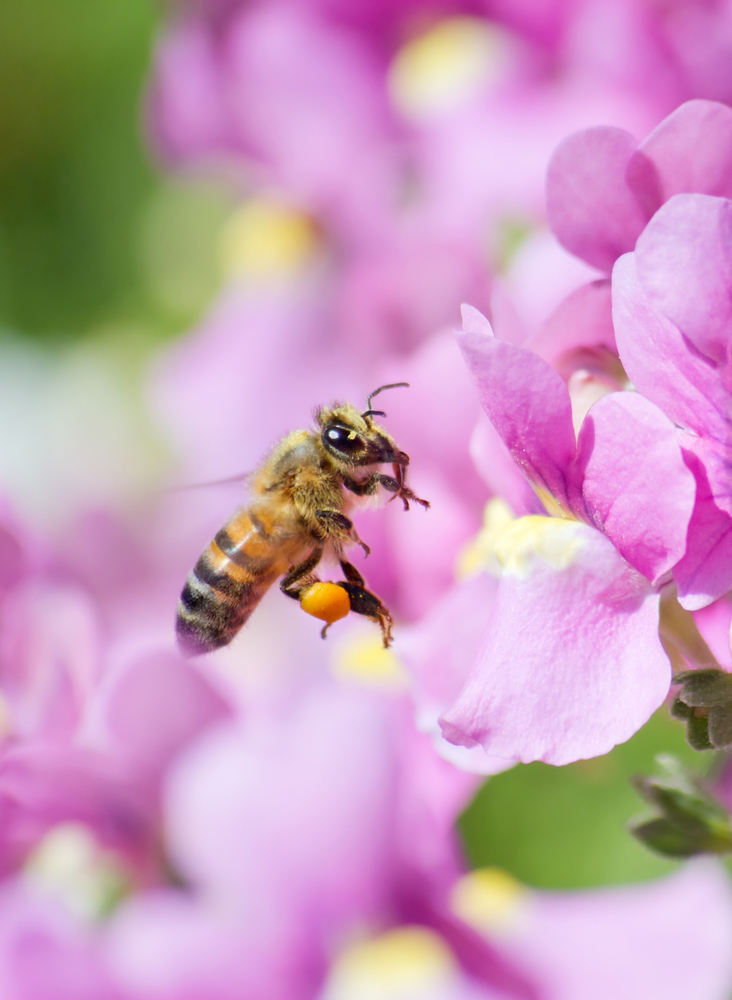
We need pollinators and the last thing they need is need neonicotinoids.
I talked to Green Diva Meg about the impact of neonicotinoids in this Green Divas Heart Wildlife episode. Listen up, then read on for more…
Pollinators provide vital ecosystem services—and one in three bites of food we human’s eat requires pollination—but they’re seriously imperiled as a result of the widespread use of toxic pesticides.
Pollinator populations have suffered massive declines in recent years. Neonicotinoids (sometimes referred to as neonics), a potent new class of insecticides, have emerged as a leading cause.
Neonicotinoids are the most commonly used insecticides today, and these systemic and highly persistent chemicals are highly toxic to pollinators. Their most common use is as a seed coating, and neonicotinoid treated seeds are ubiquitous in industrial agriculture.
[bctt tweet=”With about ¼ of all American bumblebees currently at risk of extinction, any exposure to neonicotinoids is a very serious threat to their survival.”]
Acute exposure to neonicotinoids result in massive losses, like the incident where 50,000 bumblebees died after some trees were sprayed with neonicotinoids in a Target parking lot outside of Portland. But even more insidious are the sub-acute and chronic impacts of neonicotinoids on bees, which severely compromise bee populations by impairing neurological function. These neurological impacts reduce the ability for pollinators to perform activities essential for their survival like foraging, communicating and reproducing.
Even very small levels of exposure can have big impacts and while these exposures don’t yield large numbers of bodies in one place, their population level effects may be even more dramatic than incidents of acute toxicity. With about ¼ of all American bumblebees currently at risk of extinction, any exposure to neonicotinoids is a very serious threat to their survival.
Bonus:
Listen to the latest full episode of The Green Divas Radio Show…
 Lori Ann Burd, Environmental Health Director, directs the Center for Biological Diversity’s efforts to protect humans and all other species from the harmful effects of toxic substances. She earned her B.A. at Colorado College and her J.D. at Lewis and Clark Law School. Before joining the Center she worked as a staff attorney and campaign manager for the Portland-based nonprofit Bark to protect forests, rivers and wildlife, then as a contract attorney for National Wildlife Federation, focusing on mountaintop-removal coal mining and tar sands pipelines, and the Center for Food Safety, where she focused on pesticides and genetic engineering. To learn more about our work and to sign up for action alerts, please go to biologicaldiversity.org.
Lori Ann Burd, Environmental Health Director, directs the Center for Biological Diversity’s efforts to protect humans and all other species from the harmful effects of toxic substances. She earned her B.A. at Colorado College and her J.D. at Lewis and Clark Law School. Before joining the Center she worked as a staff attorney and campaign manager for the Portland-based nonprofit Bark to protect forests, rivers and wildlife, then as a contract attorney for National Wildlife Federation, focusing on mountaintop-removal coal mining and tar sands pipelines, and the Center for Food Safety, where she focused on pesticides and genetic engineering. To learn more about our work and to sign up for action alerts, please go to biologicaldiversity.org.
[dynamic-sidebar id=’Custom Widget 2′]
